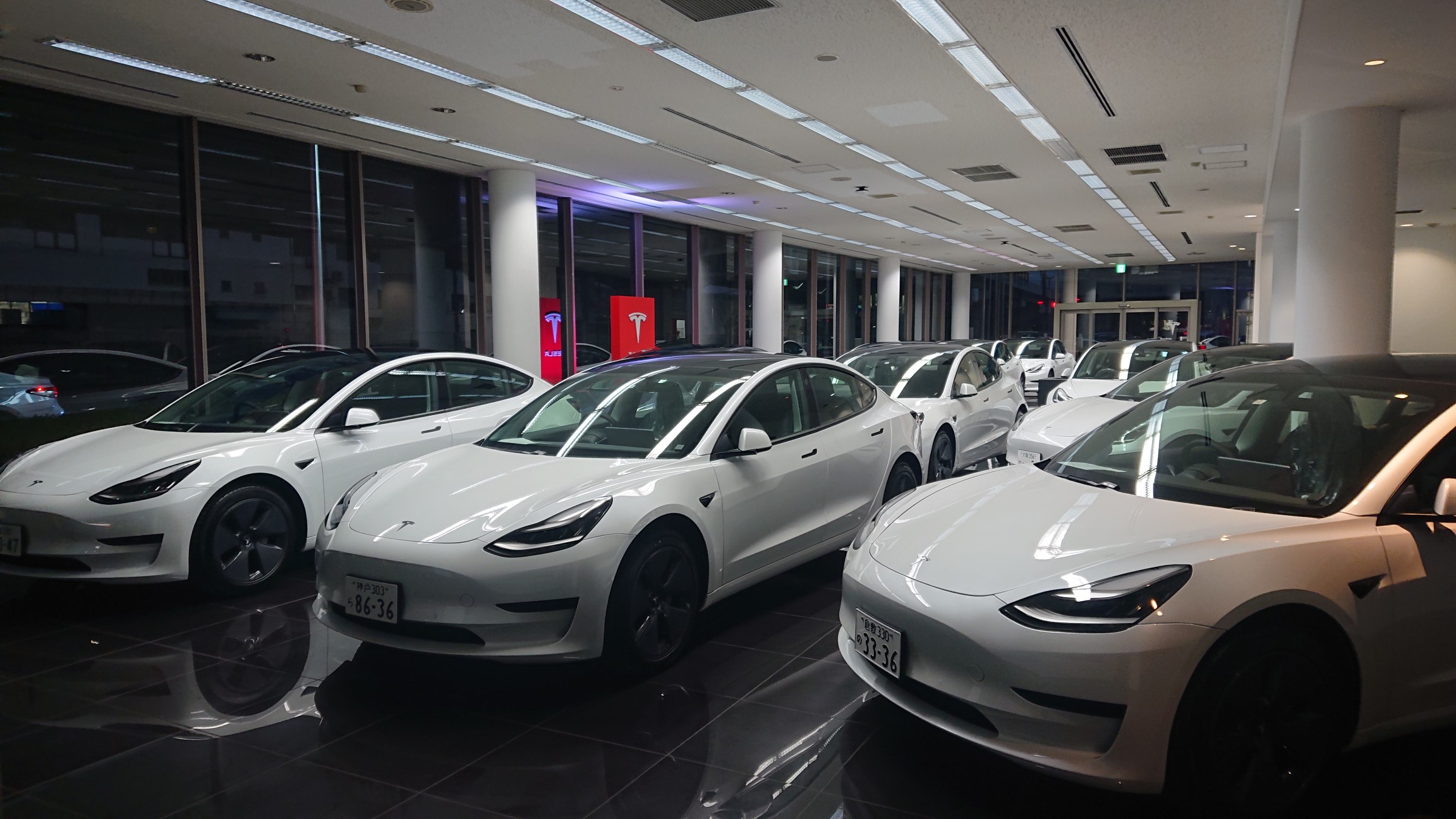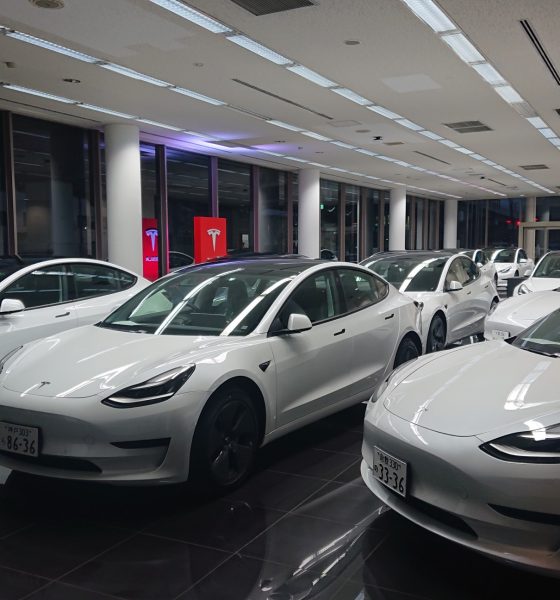

News
Tesla may not sell Giga Shanghai-produced cars in India: Road Transport Minister
Indian Road Transport Minister Nitin Gadkari nailed the point that Tesla will not be able to export Giga Shanghai Model 3 and Model Y vehicles from China to India. It is the most recent development in Tesla’s road to sell and manufacture its vehicles in India, a process that has taken over four years to configure.
Gadkari has been in contact with Tesla officials for several days, he says. However, he has repeatedly told the company’s executives that cars sold in the Indian market must be manufactured there, and the government will not accept any imports from other countries. Tesla has established its Chinese production facility, known as Giga Shanghai, as somewhat of an export hub in 2021. It all began in January when the automaker went back on its word that it would not ship China-built cars to Europe to handle demand spikes.
The company sent 7,000 Model 3 units to other countries from China within the first two weeks of the New Year. Then, the Model Y started being shipped to Europe from Giga Shanghai just last month, as Tesla’s European Gigafactory, known as Giga Berlin, has not yet been completed. However, European demand for the Model Y convinced the automaker to abandon its non-export stance, and Shanghai has supported both the Chinese market and some parts of the European market for months.
Most importantly, Gadkari is in no way trying to make things more difficult for Tesla to enter the market. Instead, he is making it a fair playing field for both the automaker and the country, which ultimately both need to benefit from the potential partnership. Gadkari told Tesla that any of the company’s needs would be taken care of by the Indian Government, the automaker just needs to manufacture its vehicles domestically.
“I have told Tesla that don’t sell electric cars in India which your company has manufactured in China. You should manufacture electric cars in India, and also export cars from India,” Gadkari told Hindu Stan Times. “Whatever support you (Tesla) want, will be provided by our government.” Gadkari also stated that there are ongoing discussions concerning Tesla’s requested tax rollbacks on imports.
Since India and Tesla have started to more seriously consider the advantages of building the world’s best electric cars in the country, there has been a hypothetical game of “Chicken” going on. Tesla was granted business licenses to sell and build electric cars in the region in the early parts of 2021, and it seemed that the expansive team of Tesla executives the company put together for India all but solidified that Elon Musk’s EV company would be present in the country in the coming months. However, Tesla wished to test demand for its cars through imports, a strategy that India’s politicians were not keen on, especially considering they are unwilling to move away from business practices that would favor manufacturing in other countries.
Tesla wants India’s government to consider lowering import taxes
Musk was not in favor of taking such a massive risk by building a production facility in India without knowing whether its vehicles would provide growth opportunities for the company. Tesla is riding a streak of eight consecutive profitable quarters, with its ninth expected to take place after the conclusion of Q3 2021. Financials, growth, and profitability are currently in the company’s best interest, of course. However, building a possibly $1 billion production plant in a market that it has never tested would essentially be a huge risk that could end up as a catastrophic failure.
It is only a safe business practice and strategy for Tesla to save potentially billions of dollars on a project that may not be successful. However, it is an advantage of Tesla’s to have such strong support from India’s government, especially as the company begins to expand into markets that are not necessarily EV hotspots.
Don’t hesitate to contact us with tips! Email us at tips@teslarati.com, or you can email me directly at joey@teslarati.com.

Elon Musk
Elon Musk and Tesla AI Director share insights after empty driver seat Robotaxi rides
The executives’ unoccupied tests hint at the rapid progress of Tesla’s unsupervised Robotaxi efforts.

Tesla CEO Elon Musk and AI Director Ashok Elluswamy celebrated Christmas Eve by sharing personal experiences with Robotaxi vehicles that had no safety monitor or occupant in the driver’s seat. Musk described the system’s “perfect driving” around Austin, while Elluswamy posted video from the back seat, calling it “an amazing experience.”
The executives’ unoccupied tests hint at the rapid progress of Tesla’s unsupervised Robotaxi efforts.
Elon and Ashok’s firsthand Robotaxi insights
Prior to Musk and the Tesla AI Director’s posts, sightings of unmanned Teslas navigating public roads were widely shared on social media. One such vehicle was spotted in Austin, Texas, which Elon Musk acknowleged by stating that “Testing is underway with no occupants in the car.”
Based on his Christmas Eve post, Musk seemed to have tested an unmanned Tesla himself. “A Tesla with no safety monitor in the car and me sitting in the passenger seat took me all around Austin on Sunday with perfect driving,” Musk wrote in his post.
Elluswamy responded with a 2-minute video showing himself in the rear of an unmanned Tesla. The video featured the vehicle’s empty front seats, as well as its smooth handling through real-world traffic. He captioned his video with the words, “It’s an amazing experience!”
Towards Unsupervised operations
During an xAI Hackathon earlier this month, Elon Musk mentioned that Tesla owed be removing Safety Monitors from its Robotaxis in Austin in just three weeks. “Unsupervised is pretty much solved at this point. So there will be Tesla Robotaxis operating in Austin with no one in them. Not even anyone in the passenger seat in about three weeks,” he said. Musk echoed similar estimates at the 2025 Annual Shareholder Meeting and the Q3 2025 earnings call.
Considering the insights that were posted Musk and Elluswamy, it does appear that Tesla is working hard towards operating its Robotaxis with no safety monitors. This is quite impressive considering that the service was launched just earlier this year.
Elon Musk
Starlink passes 9 million active customers just weeks after hitting 8 million
The milestone highlights the accelerating growth of Starlink, which has now been adding over 20,000 new users per day.

SpaceX’s Starlink satellite internet service has continued its rapid global expansion, surpassing 9 million active customers just weeks after crossing the 8 million mark.
The milestone highlights the accelerating growth of Starlink, which has now been adding over 20,000 new users per day.
9 million customers
In a post on X, SpaceX stated that Starlink now serves over 9 million active users across 155 countries, territories, and markets. The company reached 8 million customers in early November, meaning it added roughly 1 million subscribers in under seven weeks, or about 21,275 new users on average per day.
“Starlink is connecting more than 9M active customers with high-speed internet across 155 countries, territories, and many other markets,” Starlink wrote in a post on its official X account. SpaceX President Gwynne Shotwell also celebrated the milestone on X. “A huge thank you to all of our customers and congrats to the Starlink team for such an incredible product,” she wrote.
That growth rate reflects both rising demand for broadband in underserved regions and Starlink’s expanding satellite constellation, which now includes more than 9,000 low-Earth-orbit satellites designed to deliver high-speed, low-latency internet worldwide.
Starlink’s momentum
Starlink’s momentum has been building up. SpaceX reported 4.6 million Starlink customers in December 2024, followed by 7 million by August 2025, and 8 million customers in November. Independent data also suggests Starlink usage is rising sharply, with Cloudflare reporting that global web traffic from Starlink users more than doubled in 2025, as noted in an Insider report.
Starlink’s momentum is increasingly tied to SpaceX’s broader financial outlook. Elon Musk has said the satellite network is “by far” the company’s largest revenue driver, and reports suggest SpaceX may be positioning itself for an initial public offering as soon as next year, with valuations estimated as high as $1.5 trillion. Musk has also suggested in the past that Starlink could have its own IPO in the future.
News
NVIDIA Director of Robotics: Tesla FSD v14 is the first AI to pass the “Physical Turing Test”
After testing FSD v14, Fan stated that his experience with FSD felt magical at first, but it soon started to feel like a routine.

NVIDIA Director of Robotics Jim Fan has praised Tesla’s Full Self-Driving (Supervised) v14 as the first AI to pass what he described as a “Physical Turing Test.”
After testing FSD v14, Fan stated that his experience with FSD felt magical at first, but it soon started to feel like a routine. And just like smartphones today, removing it now would “actively hurt.”
Jim Fan’s hands-on FSD v14 impressions
Fan, a leading researcher in embodied AI who is currently solving Physical AI at NVIDIA and spearheading the company’s Project GR00T initiative, noted that he actually was late to the Tesla game. He was, however, one of the first to try out FSD v14.
“I was very late to own a Tesla but among the earliest to try out FSD v14. It’s perhaps the first time I experience an AI that passes the Physical Turing Test: after a long day at work, you press a button, lay back, and couldn’t tell if a neural net or a human drove you home,” Fan wrote in a post on X.
Fan added: “Despite knowing exactly how robot learning works, I still find it magical watching the steering wheel turn by itself. First it feels surreal, next it becomes routine. Then, like the smartphone, taking it away actively hurts. This is how humanity gets rewired and glued to god-like technologies.”
The Physical Turing Test
The original Turing Test was conceived by Alan Turing in 1950, and it was aimed at determining if a machine could exhibit behavior that is equivalent to or indistinguishable from a human. By focusing on text-based conversations, the original Turing Test set a high bar for natural language processing and machine learning.
This test has been passed by today’s large language models. However, the capability to converse in a humanlike manner is a completely different challenge from performing real-world problem-solving or physical interactions. Thus, Fan introduced the Physical Turing Test, which challenges AI systems to demonstrate intelligence through physical actions.
Based on Fan’s comments, Tesla has demonstrated these intelligent physical actions with FSD v14. Elon Musk agreed with the NVIDIA executive, stating in a post on X that with FSD v14, “you can sense the sentience maturing.” Musk also praised Tesla AI, calling it the best “real-world AI” today.








